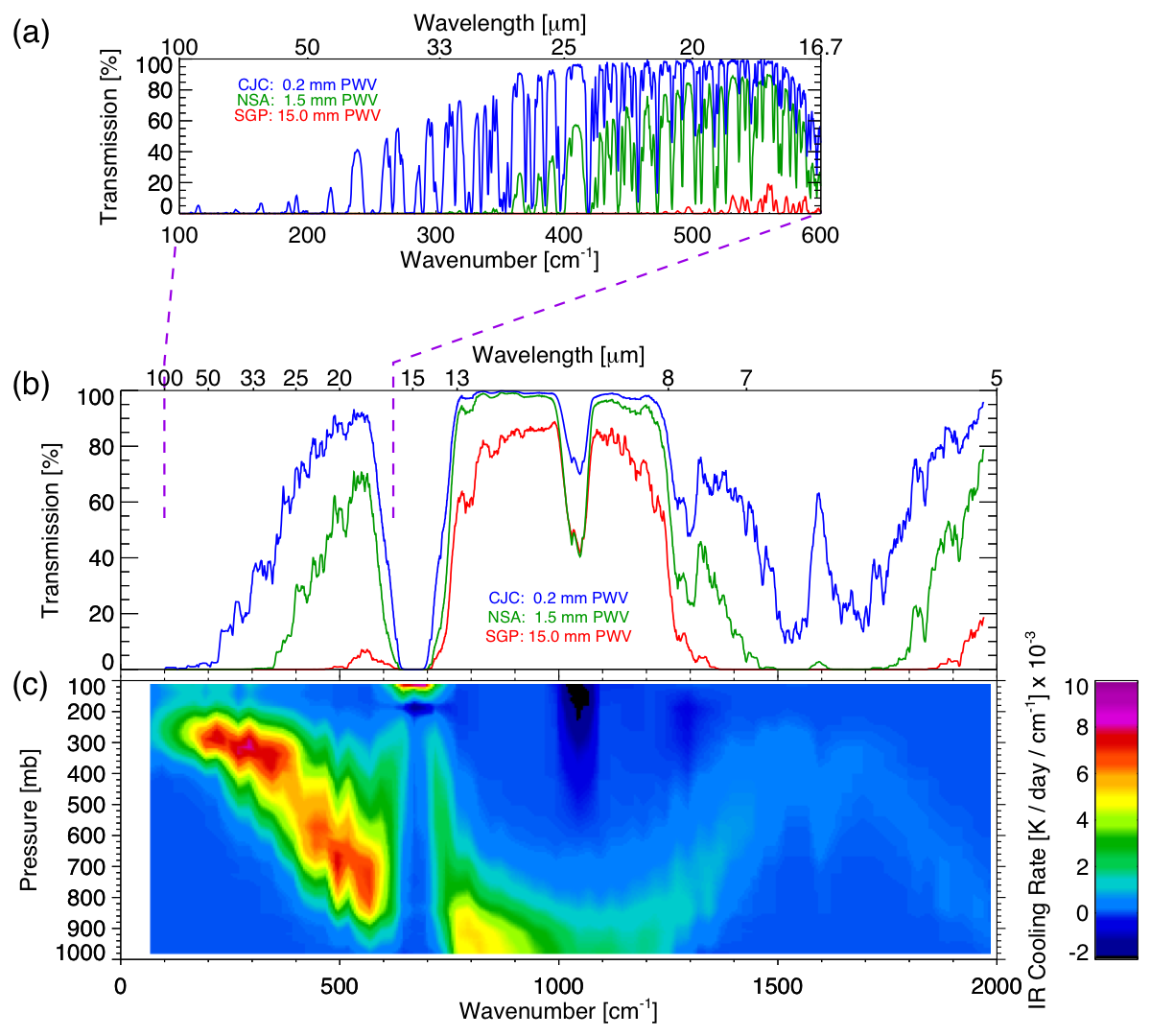Field Experiments to Improve the Treatment of Radiation in the Mid-to-Upper Troposphere
Submitter:
Turner, David D. — NOAA Global Systems Laboratory
Mlawer, Eli J. — Atmospheric and Environmental Research
Area of research:
Radiation Processes
Journal Reference:
Science
Radiative cooling and heating in the mid-to-upper troposphere contribute significantly to the dynamical processes and radiative balance that regulate Earth's climate. In the longwave, the dominant agent of this radiative cooling is water vapor. The dominant role of water vapor in middle-and-upper tropospheric processes is shown the spectral cooling rate profile for a mid-latitude summer atmosphere containing water vapor, carbon dioxide, and ozone. Absorption in the 100-600 cm-1 (17-100 microns) and 1400-1700 cm-1 (6-7 microns) bands is responsible for the majority of the infrared cooling in the middle and upper troposphere, and thus is extremely important for global circulation. Good observations are needed to validate and improve detailed line-by-line radiative transfer models in these spectral regions. These detailed line-by-line models are then used to build parameterizations of these important radiative processes that are then used in global circulation and numerical weather prediction models.
Impact
However, accurate high-spectral-resolution radiance observations in the far-infrared (defined here to be wavelengths greater than 15 microns) have been limited by two things. First, due to the strength of the absorption of water vapor in this spectral region, the atmosphere is largely opaque at the surface for the majority of locations around the globe. As an example, the spectral transmission of the atmosphere in the infrared is shown in the figure, which demonstrates that for typical conditions at the ARM Southern Great Plains the atmosphere is opaque in the far-infrared. Thus, these measurements can only be made in extremely dry places or on airborne platforms.
Second, there has been a lack of well-characterized and accurate radiometers that measure spectrally resolved radiation in the far-infrared. The relatively recent development of new state-of-the-art infrared interferometers that measure downwelling radiance in this spectral region allows the uncertainties in the radiative transfer models in the far-infrared to be evaluated and addressed. Furthermore, there have also been recent developments to make more accurate measurements of the water vapor burden in such dry environments, which was also required as input for the radiative transfer models.
Summary
The ARM Climate Research Facility conducted two field experiments to evaluate the accuracy of detailed radiative transfer models in these spectral regions that are normally opaque at the surface. The Radiative Heating in Underexplored Bands Campaigns (RHUBC) were conducted in February–March 2007 at the ARM Climate Research Facility in Barrow, Alaska, and in August–October 2009 at a high altitude (17,500 ft above sea level) in the Atacama Desert region of Chile. Data from RHUBC-I has already led to several important results, while the analysis of the RHUBC-II data is still in its early stages. This article provides an overview of these two experiments, some of the conclusions from RHUBC-I, and a view of future activities.



